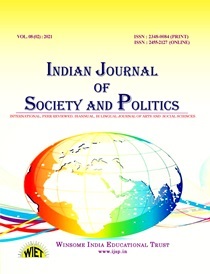Enduring Anti-Incumbency: A Deep-Rooted Trend in Himanchal Pradesh Political Landscape
Srishti Sharma, Santosh Kumar
Affiliations:
- Research scholar, Department of South and Central Asian Studies, SIS, Central University of Punjab, Bathinda, Punjab, INDIA
- Assistant Professor, Department of South and Central Asian Studies, SIS, Central University of Punjab, Bathinda,Punjab, INDIA
Through a long history of elections in the state of Himachal Pradesh, one can observe that there has hardly been a government that has ruled for two or more consecutive tenures; the government in Himachal Pradesh keeps changing after completing a tenure. This study contributes to our understanding of the alternating pattern of government in Himachal Pradesh, emphasizing the emergence and evolution of the bi-polar party system in the state. Anti-incumbency has become more like a tradition in this swing state, where the two main parties, BJP and Congress, keep the bi-polar party system intact, not letting any other political party gain significant recognition. Since 1993, the state has constantly been on a path of anti-incumbency, escaping from Congress domination. The study would emphasize how the administration of the state has been rife with malpractices, inefficiency, red-tapism, and corruption, and to what extent the incumbency has contributed to it. The multiple issues in the state, such as unemployment, ecological fragility, discontentment among government employees, the struggles of farmers in the horticulture sector, and financial burden, are to a great extent related to the constant changes of the government in the state. The study calls for a thorough evaluation of the workings of both parties and therefore also raises the question of whether the state of Himachal Pradesh is ready for the entry of another party into its political landscape. Additionally, the study will examine the state's dependency on the central government and whether the state would benefit from a "double-engine government." Finally, the study will explore whether anti-incumbency will continue to dominate the state's political landscape or if it will eventually subside.
Keywords:
Himanchal Pradesh, Anti-Incumbency, Bi-Party, Elections






